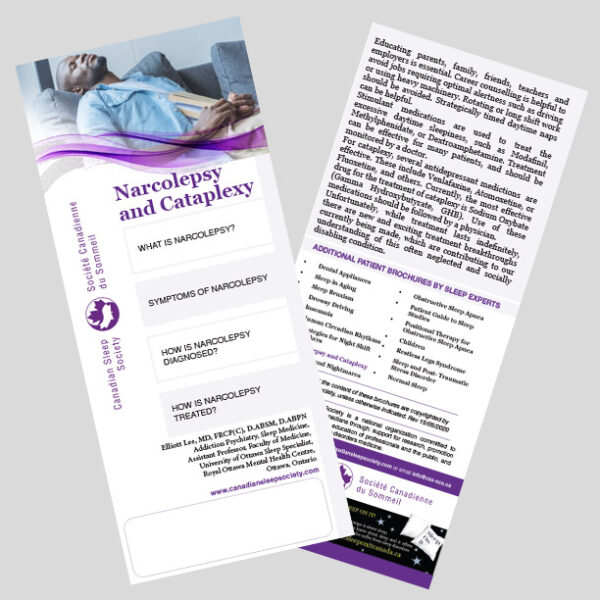

Nishino S, Fruhstorfer B, Arrigoni J, Guilleminault C, Dement WC, Mignot E. Pharmacologic management of excessive daytime sleepiness. Desmethyl metabolites of serotonergic uptake inhibitors are more potent for suppressing canine cataplexy than their parent compounds. Nishino S, Arrigoni J, Shelton J, Dement WC, Mignot E. This compound had less side effect than those of tricyclic antidepressant, clomipramine. Our study contributes further to previously reported role of adrenergic uptake inhibition in cataplexy. Milnacipran reduced cataplexy in human patients and REM sleep in healthy human subjects. Milnacipran also significantly reduced cataplexy dose-dependently in the study on canine narcolepsy. The percentage of REM sleep significantly decreased ( p = 0.042) in the subjects with milnacipran (17.5 ± 1.7%) compared to subjects with placebo (21.5 ± 2.3%). Milnacipran significantly reduced cataplexy from 9.3 to 5.5 episodes per month in human patients without much side effects. The food-elicited cataplexy test was used to assess the anticataplectic effect of milnacipran. In the study on canine narcolepsy, four genetically narcoleptic Doberman pinschers were enrolled. To assess milnacipran’s depressant effect on REM sleep, we performed nocturnal polysomnography examinations twice on each eight healthy adult subjects who were administered with milnacipran or placebo. The change in the frequency of cataplexy and side effects before and after drug replacement was investigated. Ten human patients with narcolepsy–cataplexy who changed medication from clomipramine to milnacipran due to side effects were enrolled.
:max_bytes(150000):strip_icc()/what-is-narcolepsy-3014795-01-11f3b11216ae4f55acc733e2e4a571c2.png)
We also assessed the effect of milnacipran on REM sleep suppression in nocturnal sleep. We assessed the anticataplectic effect of milnacipran, an SNRI, on human and canine narcolepsy. Even though tricyclic antidepressants are effective in reducing sleep paralysis and hypnagogic hallucinations, they even enhance daytime sleepiness, dizziness, and orthostatic hypotension. Cataplexy has been treated pharmacologically, most often with tricyclic antidepressants. Importantly, management also needs to involve sleep hygiene advice, safety measures whenever applicable and guidance with regard to the social sequelae of cataplexy.Ĭataplexy Drop attacks Narcolepsy Pseudocataplexy Sodium oxybate Syncope.Cataplexy is a sudden drop of antigravity-muscle tone triggered most often by positive emotional factors, which is one of the major symptoms of narcolepsy. Symptomatic treatment is possible with antidepressants and sodium oxybate.
CATUABA NARCOLEPSY CATAPLEXY SERIES
Over time, these severe symptoms evolve to the milder adult phenotype, and this pattern is crucial to recognize when assessing the outcome of uncontrolled case series with potential treatments such as immunomodulation. Cataplexy shows remarkable differences in childhood compared to adults, with profound facial hypotonia and complex active motor phenomena. Currently, the diagnosis of cataplexy is made almost solely on clinical grounds, based on history taking and (home) videos.

Childhood narcolepsy, with its profound facial hypotonia, can be confused with neuromuscular disorders, and the active motor phenomenona resemble those found in childhood movement disorders such as Sydenham's chorea. They can be differentiated from cataplexy using thorough history taking, supplemented with (home)video recordings whenever possible. Cataplexy mimics include syncope, epilepsy, hyperekplexia, drop attacks and pseudocataplexy.

Next to narcolepsy, cataplexy can sometimes be caused by other diseases, such as Niemann-Pick type C, Prader Willi Syndrome, or lesions in the hypothalamic or pontomedullary region. Moreover, childhood cataplexy differs from the presentation in adults, with a prominent facial involvement, already evident without clear emotional triggers ('cataplectic facies') and 'active' motor phenomena especially of the tongue and perioral muscles. The expression of cataplexy varies widely, from partial episodes affecting only the neck muscles to generalized attacks leading to falls. Although cataplexy is rare, its recognition is important as in most cases, it leads to a diagnosis of narcolepsy, a disorder that still takes a median of 9 years to be diagnosed. This review describes the diagnosis and management of cataplexy: attacks of bilateral loss of muscle tone, triggered by emotions and with preserved consciousness.


 0 kommentar(er)
0 kommentar(er)
